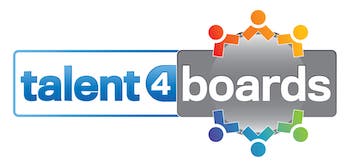– SOUTH AFRICA; Cape Town – Naspers Limited (JSE: NPN)(LSE: NPSN) today announced that its CEO, Koos Bekker, will be succeeded by Bob van Dijk, currently Naspers’s most senior ecommerce chief.
Bob (41) holds an MSc Econometrics from Erasmus University Rotterdam (cum laude), plus an MBA from Insead in France (Dean’s List). Among other experience, he headed up eBay Germany, that group’s biggest market outside the US, and was COO of Schibsted’s Classifieds.
“In view of our strong development focus on ecommerce, the board believes that Bob has the skills to lead us into the next phase of our growth,” said Ton Vosloo, Naspers chair. Bob takes over on 1 April.
Koos (61) will stand down from the Naspers board for a year, to allow Bob the space to settle in with both Naspers top management and the board. Koos intends to travel widely and research where the group’s next spurt of growth may come from, once ecommerce has reached maturity. He will also stay on the Tencent board. In April 2015, Ton Vosloo intends to step down as chair, when Koos will succeed him.
Koos participated in four technology spurts with the group. In 1985, as a consequence of a paper Koos wrote at Columbia University, a young group in their early thirties launched M-Net, one of the first such pay-television services outside the US. At the time, Naspers was a 26% backer and Ton Vosloo the M-Net chair. Today this group operates pay TV across 48 countries in Africa and serves some 7 million households.
In 1991 the MultiChoice team under Koos, together with partners, launched the mobile phone operator MTN. Today MTN is the biggest mobile operator in Africa and one of the largest companies on the JSE.
In 1997 Koos replaced Ton Vosloo as CEO of Naspers itself and the group ventured into the internet. After stumbling a few times, this is now Naspers’s biggest business segment.
Around 2008 the group entered ecommerce. It is investing heavily in an ambitious effort to become a global player in classifieds and transactional ecommerce.
When M-Net was formed in 1985, Naspers was a public but unlisted company with an implied market capitalisation of R24 million. When Koos moved into Naspers as CEO in 1997, the then listed group had a market cap of R5,6 billion.
Today Naspers’s market capitalisation is R500 billion (US$45 billion). It is the largest media group outside the US and China, larger than any in Europe.
R1 invested in Naspers when M-Net was formed in 1985 would have turned into R5 700 today (excluding dividends). And R1 invested in October 1997, when Koos became Naspers CEO, would be worth R24 today (without dividends).
“We are also proud of the resonance our growth has in the South African economy, via the thousands of people we employ directly and the tens of thousands in the broader ecosystems of our businesses. We particularly enjoyed the new products and services our people invented,” said Ton Vosloo.
Koos expressed his gratitude to his Naspers colleagues and board members for the opportunity to work with them. “It’s been fun,” he said. “I couldn’t have wished for a more interesting life. Now I hope to travel to places like Seoul and San Francisco where the future is being manufactured, and see if there are new technologies we should be trying out. Plus experience a few oddball spots. When Ton steps down, I’ll rejoin the board, hopefully with fresh ideas.”
Bob looks forward to taking over on 1 April. He lives in the Netherlands with his wife Tina, a senior finance executive, and two young daughters. He is a keen sportsman and speaks five languages. “Naspers is a great company and I’m honoured to lead an excellent team,” said Bob.
- Disclaimer - News, data, and statements included in this release are intended exclusively for general information purposes. Talent4Boards does not guarantee that news is accurate or about the correct person and accepts neither liability for the consequences of the reader’s reliance, nor responsibility for the accuracy of the information. Nothing in this release should be considered for decisions about referred securities. Products and brand names may be trademarks or registered trademarks of their respective owners.

